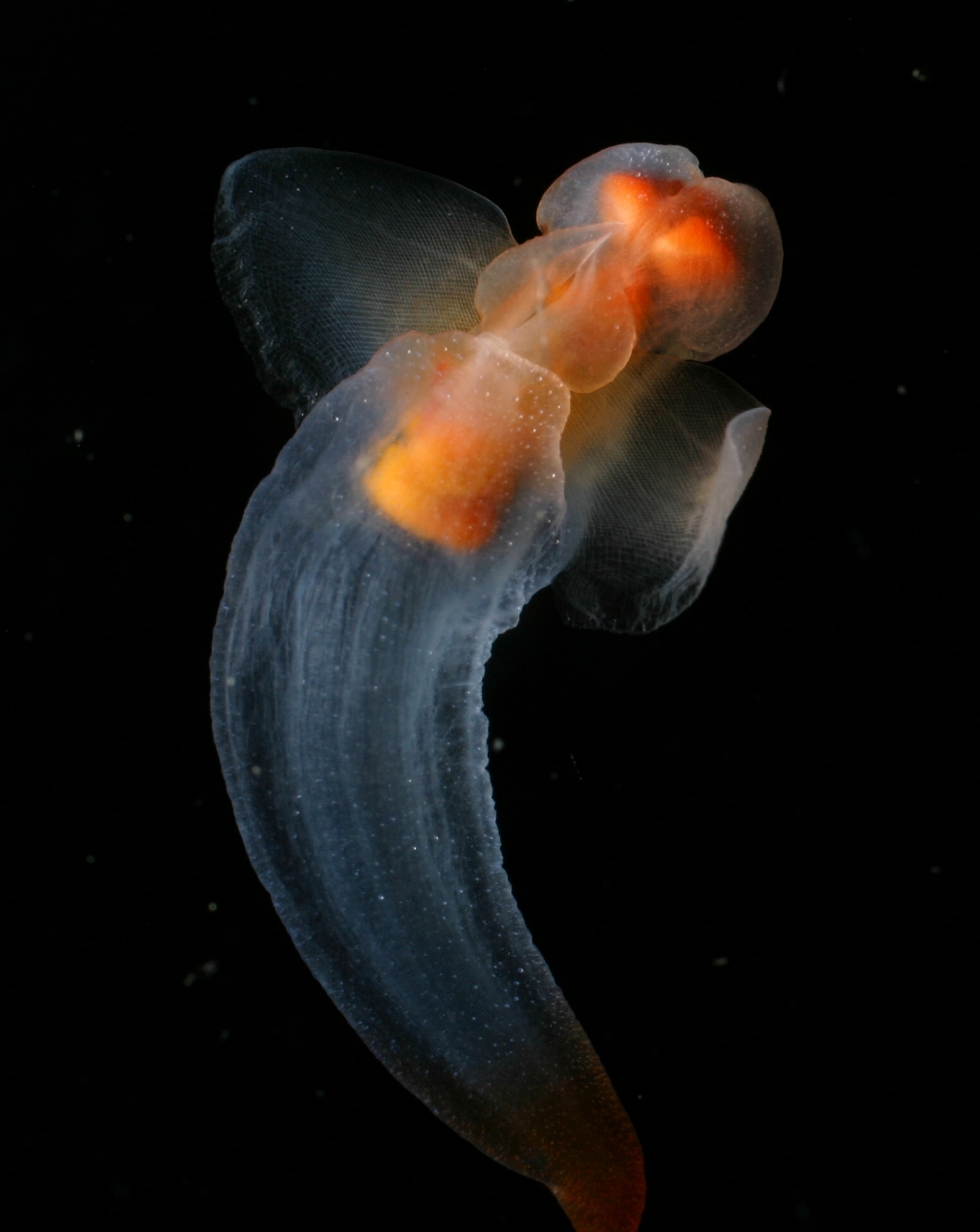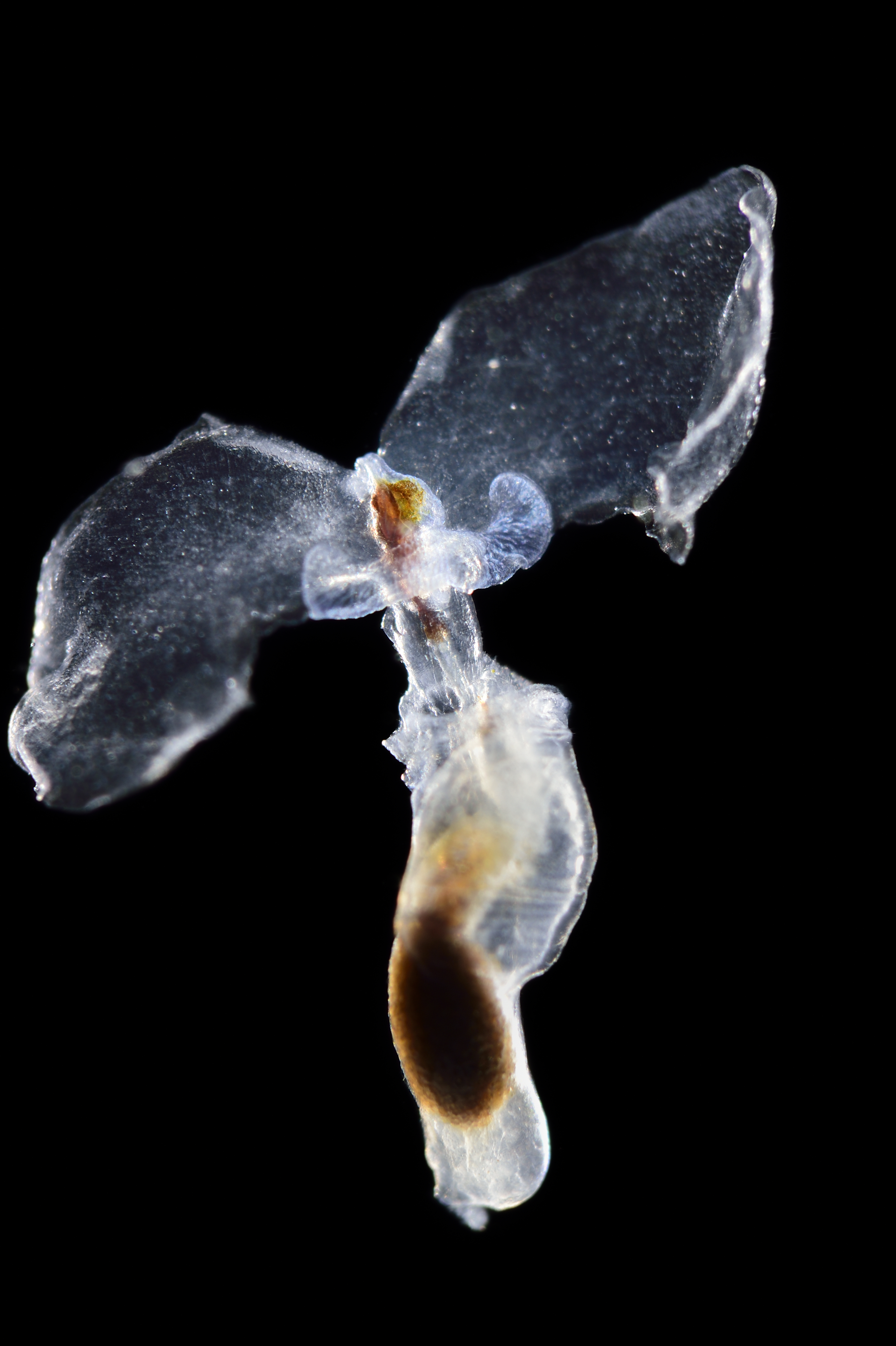Sea butterfly is a marine snail with a translucent shell. A translucent object allows light to pass through it. The sea butterfly gets its name from a pair of fleshy, winglike structures that move somewhat like the wings of a butterfly. This movement helps the animal swim through the open water. Sea butterflies are also called pteropods << TEHR uh pods >>, which is Greek for wing-foot. Its “wings” act in place of a snail’s foot.



Sea butterflies are fragile and very small. They measure less than 2/5 inch (1 centimeter) long. Sea butterflies carry a heavy shell, which can cause them to sink if they stop moving. To slow their sinking, these animals sometimes secrete a large, transparent “parachute” of mucus, from which they hang. This sticky mucus net also traps such tiny food particles as single-celled plantlike organisms called phytoplankton. The sea butterfly then eats the mucus web along with the trapped food. Sea butterflies spend nights at the ocean’s surface feeding and days deep in the ocean where it is dark. The darkness protects them from predators that hunt by sight. Fish and sea angels, a type of pteropod with no shell, feed on sea butterflies.
Sea butterflies are found worldwide but are most common in polar regions. There are many species (kinds) of sea butterflies with differently shaped shells and wings. Little is known about many sea butterfly species, because they are fragile and difficult to study.
